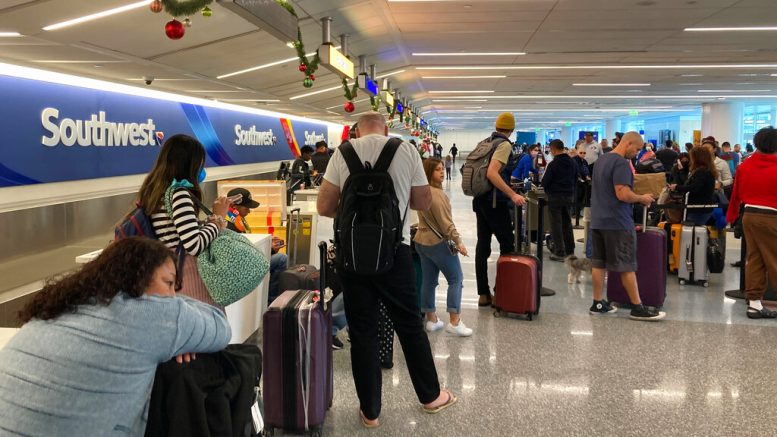The Associated Press
Major U.S. airlines were broadsided by the massive weekend winter storm that swept across large swaths of the country but had largely recovered heading into Monday, except for one.
Problems at Southwest Airlines appeared to snowball after the worst of the storm passed. It cancelled more than 70% of its flights Monday, more than 60% on Tuesday, and warned that it would operate just over a third of its usual schedule in the days ahead to allow crews to get back to where they needed to be.
American, United, Delta and JetBlue, suffered cancellations rates of between none and 2% by Tuesday.
The disparity has triggered a closer look at Southwest operations by the U.S. Department of Transportation, which called the rate of cancellations “disproportionate and unacceptable,” and sought to ensure that the Dallas carrier was sticking by its obligations to stranded customers.
The size and severity of the storm created havoc for airlines. Airports were overwhelmed by intense snowfall and drifts. Airlines cancelled as many as 20% of their flights Saturday and Sunday and Buffalo Niagara International Airport, close to the epicenter of the storm, remains closed Tuesday.
Yet it has become clear that Southwest is suffering a disproportionate disruption. Of the 2,890 flight cancellations in the U.S. early Tuesday, 2,522 were called off by Southwest.
Southwest spokesman Jay McVay said at a press conference in Houston that cancellations snowballed as storm systems moved across the country, leaving flight crews and planes out of place.
“So we’ve been chasing our tails, trying to catch up and get back to normal safely, which is our number one priority as quickly as we could,” he said. “And that’s exactly how we ended up where we are today.”
Passengers stood in long lines trying to rebook their flights. The Department of Transportation said on Twitter that it was “concerned by Southwest’s unacceptable rate of cancellations and delays & reports of lack of prompt customer service.” The tweet said the department would look into whether Southwest could have done anything about the cancellations and whether the airline was complying with its customer service plan.
Southwest CEO Bob Jordan told The Wall Street Journal in an interview that the airline would operate just over a third of its usual schedule to allow crews to get back to where they needed to be.
“We had a tough day today. In all likelihood we’ll have another tough day tomorrow as we work our way out of this,” he said Monday evening. “This is the largest scale event that I’ve ever seen.”




































